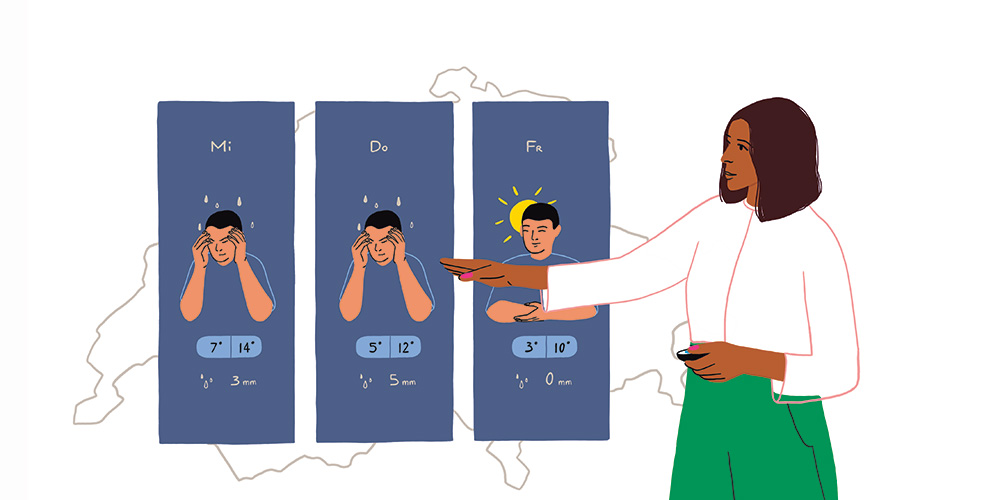Is there such a thing as “migraine weather”?
Text: Athina Papadopoulou and Marcus D'Souza
Those plagued by headaches know it well. Yet, the medical literature does not have a consensus on the connection between weather and migraines. An overview.
In the field of neurology, migraines are considered a typical example of weather-related pain. Studies report that around half of the patients cite changes in weather as a trigger for migraine episodes. Yet there are few studies that attempt to demonstrate this link systematically – and they have met with limited success.
One such study in Northern Norway reports an uptick in migraine episodes in the summer, while another study from the U.S. points to a correlation between warm, dry Chinook winds from the Rocky Mountains – similar to the “Foehn winds” in the Alps – with more frequent migraines. An Austrian study proposes a link between headaches and certain weather conditions, such as frequent alternation between sunshine and clouds or precipitation. These correlations, however, were weak and not statistically significant.
A more recent Italian study with far more participants (around 1,800) and a longer observation period of two years, showed stronger results: This study demonstrated a statistically significant correlation between weather conditions and the number of emergency medical consultations due to migraines. The actual temperature itself was not the crucial factor. Instead, the key parameters were a sudden rise in temperature as well as high humidity and low barometric pressure two days before the onset of headaches. Still, the underlying mechanisms remain unclear.
According to one theory, changes in weather could increase the excitability of neurons in certain regions of the brain that play a critical role in the onset of migraine attacks. Some researchers propose that the brains of migraine sufferers are more sensitive to stimuli and changes in general, which would explain why they respond more intensely to shifting weather conditions.
There is little we can do to influence the weather on a day-to-day basis. Our advice to those who experience migraines, therefore, is to try and maintain balanced daily routines. Various behaviors have been shown to reduce migraine frequency, including moderating stress levels, avoiding alcohol, engaging in cardiovascular activity and maintaining a regular sleep schedule.
Referenced literature was published in Cephalgia (2011), doi: 10.1177/0333102410385580, and as an abstract (EPO 579 in this PDF) at the Congress of the European Academy of Neurology (2023).
More articles in this issue of UNI NOVA (May 2024).


